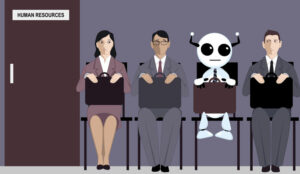With online shopping, transactions and communication as prevalent – and as easy – as they are today, it can often be tempting to focus most of your Customer Experience (CX) efforts on getting your virtual presence right.
When many of your customers will engage with you solely on a virtual platform, it can make sense to favor it. However, neglecting your brick-and-mortar experience can lead to inconsistent CX and online backlash.
So, where should you be focusing your CX? Online, or in-store? There’s a case for both.
Social Media and Its Influence on CX
There’s no doubt that social media has a massive influence on the Customer Experience. Negative posts on social media platforms about service received, the company’s policies on certain things, even something as simple as the location of the store, can create a strong negative perception, even among people who have never used the company’s services or outlets.
On the other hand, a good social media management strategy can enhance the public’s perception of the business – again, even when they have no personal engagement experience with your brand – and improve the Customer Experience. That’s why it’s pretty important to make sure you have a strong social media plan in place, both for direct engagement and for responding to negative feedback.
Online Access to Information
Whether someone comes into your brick-and-mortar store or does their shopping purely online, the vast majority of people will have visited your website first. There are several reasons for this, including:
- To find out whether you stock the product or offer the service they need
- To compare prices with other suppliers
- To read reviews of your company
- To simply find out where you are, or how to get in touch
Your website is going to be a primary contact point for most of your potential clients, and you should treat it as such. Make sure that all the most important information about your business is easily accessible – the easier you make it for people to get in touch, the more likely they will do it.
There’s nothing quite as frustrating as trying to get prices for a particular product and coming up against website after website where there are no prices listed, only a form to request a quote and a response that takes hours or days. Of course there are circumstances where it’s difficult to list prices, but make it as simple and speedy as you can for people to find out how much things will cost.
Getting Personal
No matter how good your social media game or your website, there’s very little that compares to personal interaction. Fortunately, technology has opened up a multitude of ways to interact with your customers personally, including while online. Live chats via your website, or even something as simple as a competent phone consultant, can dramatically enhance the CX.
That said, many people of all ages still enjoy the face-to-face interaction that entering a brick-and-mortar store can provide. Having access to another person who can listen to your questions, understand your facial expressions and physically show you how to use a product creates a much stronger bond and encourages ongoing engagement with your customer.
In fact, it is becoming more common to measure all moments of emotional interaction with a customer, be it face to face, in the call centre or online, and you are able to establish with our Emotional Signature project how these add or destroy value to your business..
Feel it, See it, Buy it
Keeping a brick-and-mortar store can be costly, especially if you carry a significant inventory – the larger your floor space, the higher your rent, after all. But there’s a reason why even previously online-only giants Amazon have opted to open physical stores as well, even though their online business is booming: it offers an unbeatable Customer Experience.
Let’s be realistic – there’s no way Amazon can possibly carry their entire inventory in any one store; it’s far too massive for that. However, people do enjoy the tactile and interactive nature of a physical shop, and the opportunity to see, touch and test out certain products, or even just interact with another person, makes the trip worthwhile.
To keep stores to a manageable size and rent, a growing number of retailers are offering a small section of their inventory at their brick-and-mortar locations, with the bulk of their inventory only available for purchase online.
Others act more like showrooms, with only one of any given model on display, and an expert to talk customers through using it. Most of these customers are perfectly content to place their order online, or even in-store with the assistant’s help, after having seen the product in action.
Consistent CX
A negative, or a particularly positive, experience with online interactions can lead to customers in-store; likewise, poor, or amazing, service in-store can lead to bad, or good, online feedback. Neither stands in isolation.
It’s worthwhile to set up standardized responses to certain questions, conduct training to ensure all staff deliver the same level of service, and monitor both your online and physical interactions to make sure there’s consistency.
The important thing to concentrate on is not whether you get more leverage out of your physical or virtual environment, but rather to ensure that customers get a consistent Customer Experience regardless of how they choose to interact with you.
Author: Guest Author
Published On: 23rd May 2017 - Last modified: 24th May 2017
Read more about - Guest Blogs















